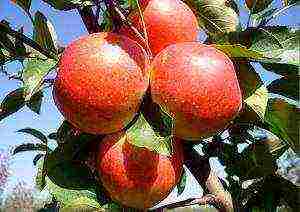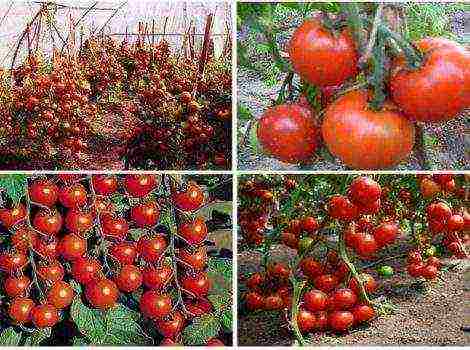Content
Due to their origin and some biological characteristics, pear-type garden plants are more adapted to temperate and warm climates than the same apple trees. When choosing a pear variety for the Krasnodar Territory, one should also take into account the general condition of the seedling and its age. Before decorating the garden with new pear seedlings, it is necessary to study in detail the climatic and soil zone of a particular site.
When is it worth waiting for the first frost, and are sharp temperature fluctuations possible during spring and winter? Particular attention is paid to the possible level of precipitation throughout the year and the temperature regime in summer. For optimal growth of young seedlings, it is necessary to observe the optimal regime of such external factors as nutrition, lighting, moisture and heat levels. Only with full compliance with all these requirements can you achieve a rich and good harvest, increase the early maturity and quality of the fruit. When using the same variety in different regions, you can achieve completely different results.

The best pear varieties for the Krasnodar Territory:
- one of the summer varieties is Williams Summer. Has a sweet, juicy, tender white-yellow pulp with a nutmeg aroma. The fruit itself is medium in size and ripens at the end of August. If they are harvested a week before they are fully ripe, they can be stored in a cool place for several months;
- another summer variety of pears is "Favorite". Its fruits are very fragrant, although they give off sourness. Depending on weather conditions, in the Krasnodar Territory, the harvest of this variety is carried out at the end of August. Can be stored fresh in winter;
- "Starkrimson" also belongs to the summer varieties with fairly large fruits. There is a certain sourness, although the fruits are very fragrant;
- Trapeznitsa is also considered an early variety. The skin color of these juicy pears is green, but with a characteristic red blush;
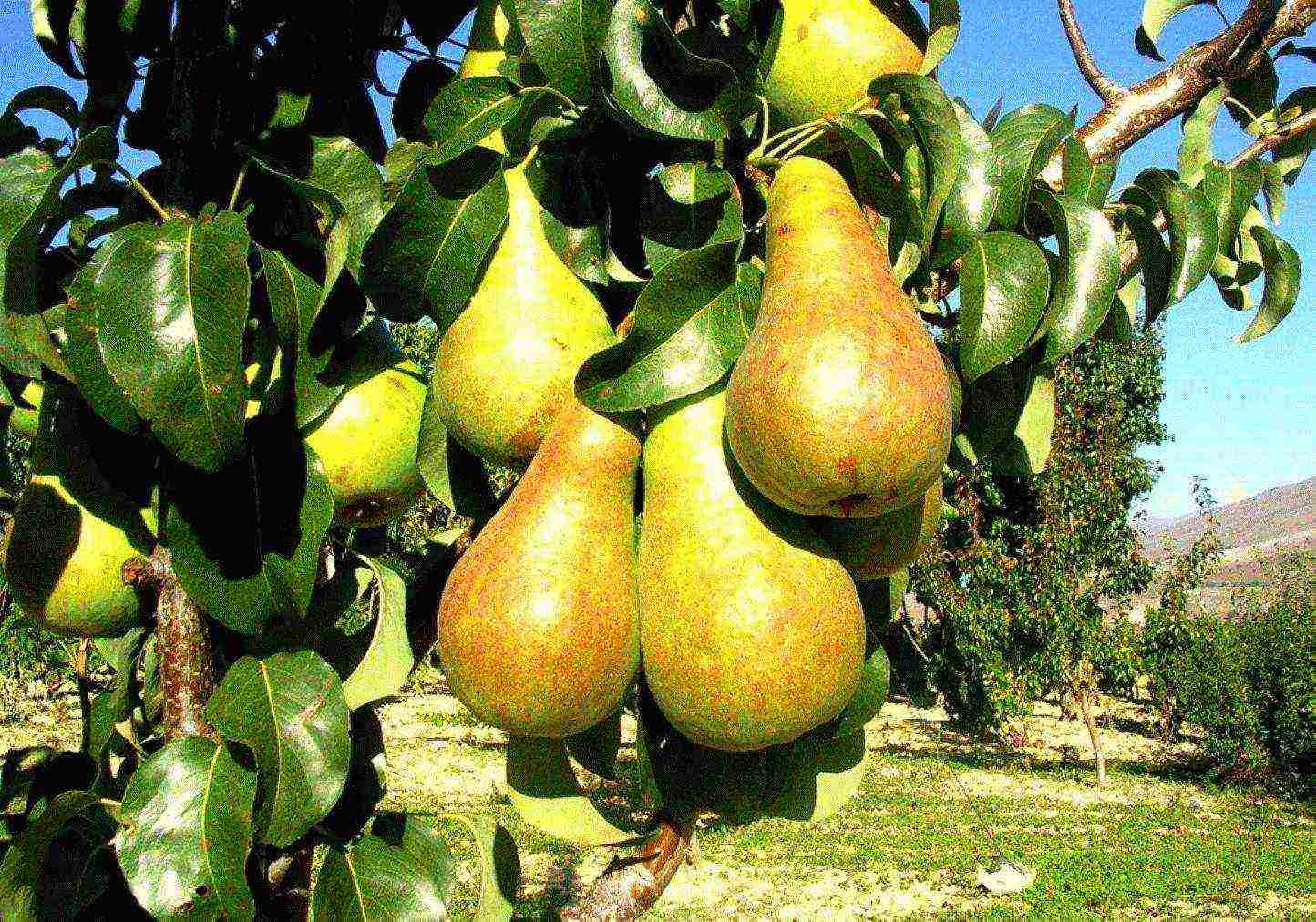
- the "June Lapotika" belongs to the superearly variety. The pulp has a slight sour taste. The fruit itself is yellow-green in color. Ripening occurs at the beginning of August;
- the "Moldavian early" pear of medium size with a yellow-green peel. Ripening occurs in August, depending on the daily temperature;
- one of the popular autumn varieties is called "Margarita Marilla". It has a very tender, aromatic and juicy pulp. Ripens in September;
- quite large fruits in the autumn variety "Conference". It has a juicy and sweet flesh. It sings in September;
- golden yellow and large fruits at the "Autumn Bukovina". Some fruits have a peculiar reddish blush. The fruit itself is very aromatic, sweet-sour, juicy and tender. The pulp itself is creamy;
- the result of selection of an intensive type can be called "Vrodlivu". This variety is fast-growing, resistant to many diseases, parasites and has a high yield. It is worth considering that this variety is not able to survive in severe frost and its branches are extremely fragile;
- elongated and rather large fruits in the autumn variety "Berebosk". It is extremely resistant to numerous parasites and some scab-like diseases. The level of productivity is high, as is the level of transportability of fruits;
- special resistance to fungal diseases and at the same time winter-hardy variety "General Kirponos". Ripe fruits are yellow-green in color with a slight blush. The pulp is pleasant to the taste, fragrant, oily and juicy;

- elongated, ruddy, large and yellow-golden fruits at "Smerichka". The fruit itself turns out to be tender, juicy and has a pleasant almond aroma, which many like so much;
- one of the most winter-hardy, high-yielding and early-growing varieties - "Tavrichesky". The leaves practically do not burn in the sun and are not susceptible to scab infestation;
- variety "Nikolay Kruger" can be removed in early September, but for conservation it is better to harvest only at the end of the month. The fruits are very juicy, so you need to pick them very carefully;
- the Crimean Honey pear variety is especially fast-growing. Her harvest is always abundant and stable. Well tolerates conditions of prolonged frost;
- one of the earliest varieties that are popular with gardeners in the Krasnodar Territory is "Zolotovorotskaya". Belongs to the category of early varieties, which ripen in mid-October;
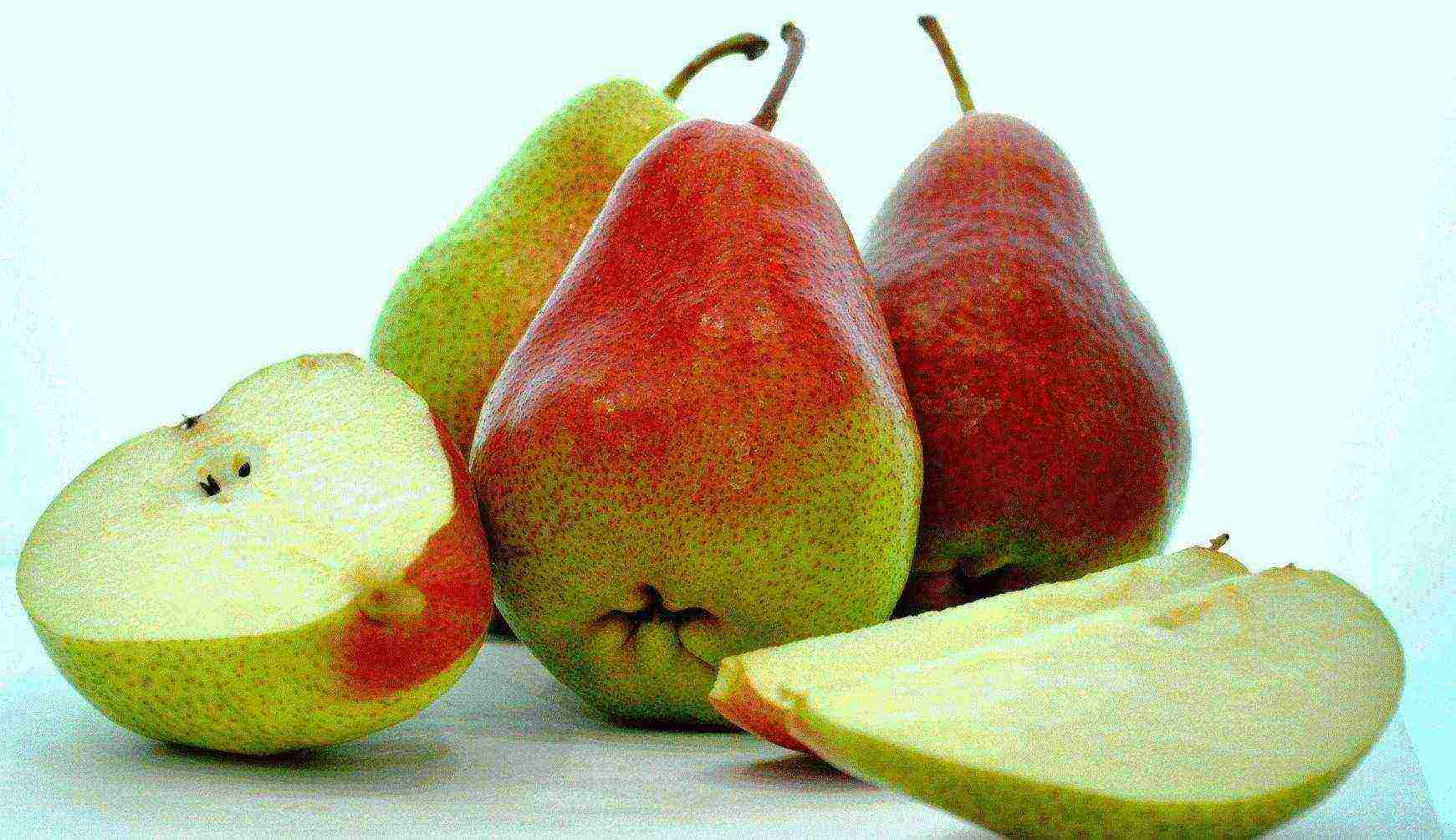
- the early-growing variety "Exhibition" is especially resistant to spotted leaves, powdery mildew and scab. Well suited for growing sweet fruits in the Krasnodar region;
- at the end of September, the winter pear variety "Kucheryanka" ripens, characterized by a high level of early maturity, frost, bacterial burns and scab;
- the relatively self-fertile winter variety "Sekui" has a creamy and juicy dessert taste. Outwardly, they resemble a hybrid of a pear and an apple;
- regular fruiting is observed in the winter variety "Autumn Dream". The fruits are small but very fragrant. It is good to make juice from them;
- The winter variety "Cheremshina" is distinguished by its winter hardiness and special taste. Fast-growing and very fruitful. Practically not susceptible to fungal infections.
Viewed: 74
Ilyinka
Ilyinka - one of the earliest varieties ripening in the second half of July. Fruits are pear-shaped, of medium size, when overripe on the tree, they become very loose, which gave rise to another popular name for this variety - "potato". The fruits should be removed before yellowing, after a short storage they have a fairly satisfactory taste and are juicy. The fruits are suitable for drying.
Trees enter the fruiting season relatively early. Ilyinka is one of the few
varieties of pears with significant hardiness and high yields
throughout the region.
Bere Giffard
Bere Giffard - ripens at the end of July, the fruits are removed in a state of consumer maturity. The fruits are pear-shaped, greenish-yellow, with a blush. The pulp is tender, melting, sour-sweet, excellent taste. It swells when overripe. The trees are not vigorous, the yield is average, they enter the fruiting season in the 5th - 7th year.
Differs in almost complete scab resistance.
Recommended mainly in the more favorable Black Sea, foothill and Kuban regions.
Fig
Fig - ripens at the end of July. The fruits are round in shape, with a bright blush, medium in size. The skin is thick. The pulp is juicy, sweet, with stony cells. Fruits do not get scab. Quite good taste. The tree is vigorous, healthy, not too late to enter the season of fruiting. The yield and endurance are very good. Suitable for both a table
and for drying. Recommended throughout the region.
Clapp's Favorite
Clapp's Favorite- removable maturity occurs in the first and ten days of August, not at the same time, consumer maturity after 3 - 5 days of storage. Fruits are short pear-shaped, medium-sized, with a beautiful blush. The pulp is white, with a yellow tinge, very juicy, melting, sour-sweet, very tasty. When fired, it gives dried fruit of excellent quality. The tree is vigorous, it succeeds well in culture throughout the region, but requires good care. Klapp's favorite is one of the most valuable and fruitful summer varieties in the Krasnodar Territory.
Forest beauty
Forest beauty - removable maturity occurs in late August - early September, consumer maturity after a short maturity. The fruits are medium in size, truncated-ovoid, with a bright blush. The pulp is sour-sweet, excellent and tasteful.The tree is vigorous, it enters the fruiting season early. In this variety
the high quality of the fruit is successfully combined with the drought resistance and productivity of the tree. It grows well and bears fruit in the steppe regions of the region, in the more humid foothill regions it suffers from scab.
Williams
Williams - fruits of medium size, often large, oblong-pear-shaped, lumpy. Fruits are harvested in late August - early September, after a short maturation (5 - 6 days), the pulp becomes juicy, non-geo-oily, with a sour-sweet and sour-sweet taste with a well-pronounced aroma. Fruits are excellent raw materials for compotes, drying and jam. A tree of moderate growth, with a pyramidal or high-oval crown.
The variety works quite well only in the most favorable foothill and Black Sea regions. The scab is weakly affected.
Kieffer (Kieffer Seedling)
Kieffer (Kieffer Seedling)- Removable maturity occurs at the end of September, consumption during October and November. Fruits are medium and large, cuboid, with a blush, the pulp is very juicy, tender, with a strong aroma, quite satisfactory taste.
The tree is medium in vigor and begins to bear fruit early. The variety grows well and bears fruit throughout the region. One of the most productive autumn varieties, it is not damaged by scab.
Bere Boek (Bere Alexander)
Bere Boek (Bere Alexander)- removable maturity begins in early September. Consumption within 3 to 4 weeks. Fruits are medium in size, but there are also large, long-pear-shaped, bottle-shaped, almost entirely rusty, golden at full maturity. One of the most delicious pear varieties.
The tree is of medium height, with a pyramidal, irregular crown. It grows well and bears fruit only in favorable Black Sea and foothill regions. Scab is not damaged. Enters fruiting season early.
Curé
Curé - removable maturity occurs at the end of September. Duration of storage until December. Fruits are medium-sized or large, pear-shaped, unequal. The palatability is satisfactory, sometimes good. The trees are vigorous, the variety is fruitful.
It works best in the foothill regions, but it can be recommended for culture in the steppe regions of the region, being the only pear variety for winter ripening.
for these areas. Recommended for the entire edge.
In addition to the varieties described above, in the standard assortment of Krasnodar
edges, as well as those proposed by experimental stations for production testing
there are many more varieties of significant interest for home gardens.
For example, summer recommended for distribution by the Maikop experimental station VIR
varieties André Deport, Gnokko, Bere Amanli; early autumn varieties: Conference, Minister,
Lucius, Bere Gris; late autumn varieties: Spadone, Peltney, Phelps and the winter Vauquelen variety.
The earliest, very common pear variety in the Krasnodar Territory is Mike
(Malgorzhatka). Instead, the Krasnodar Fruit and Grape Experimental Station
it is recommended to ripen a few days later, but larger and with better
quality of fruit pear Evtukhovka.
Of the autumn pears, the Autumn Deccan deserves attention.
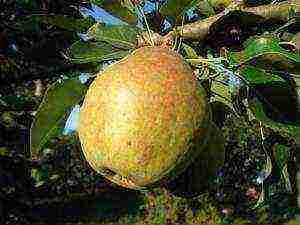
Characteristics of the pear variety Kuban late.
Originator: SKZNIISiV.
Winter pear variety, removable maturity in the Kuban conditions occurs on September 20-30. Keeping quality - until mid-January. The fruits, when stored in the refrigerator, do not lose their taste. The fruits are used for fresh consumption and for processing (compotes, preserves, dried fruits).
The tree of the Kubanskaya pear variety is late medium-sized. Crohn's irregular, medium density; skeletal branches are straight, compactly located, depart from the trunk at an acute angle; the ends of the branches are directed upwards. The trunk is cylindrical and covered with gray scaly bark.Fruiting type: compound ringlets, spears, fruit twigs. Shoots of medium thickness, geniculate, brownish-brown, slightly pubescent; lentils are few and small. The kidneys are medium, bent, conical. Leaves are medium in size, ovoid, short-pointed, green, smooth, dull; the blade of the leaf is flat, there is no pubescence, the edge of the leaf is finely serrated; petiole long, thin, glabrous. The flowers are medium-sized, small-chalky, white, odorless; oval petals.
The fruits of the pear variety Kuban late are of medium size (weight 150 g), one-dimensional, pear-shaped, regular in shape, the surface is small-knobby. The skin is dry, slightly rough. The color is greenish at the moment of removable maturity, on the smaller part of the fruit there is a slight tan on the sunny side. In a state of consumer maturity, the main color is greenish-yellow; subcutaneous points are invisible, the heart is small, elliptical; medium-sized chambers, closed. The peduncle is weakly curved, the funnel is medium, small, slightly rusty; the calyx is open, not falling; the saucer is small, slightly grooved. The subcapillary tube is short and cupped. Seeds are medium in size, wide, ovoid, and dark brown in color. The pulp is greenish-yellow, medium density, tender, oily, sweet and sour taste with aroma (4.3-4.5 points). In the conditions of the Kuban, the fruits contain dry matter - 19.7%, sugars - 11.8%, titratable acids - 0.48%, ascorbic acid - 4.7 mg / 100g, P-active catechins - 38.5 mg / 100g raw substances.
The variety is not very picky about growing conditions, it can grow on any soils, but more marketable fruits work out on light, sufficiently moist. The Kubanskaya late pear variety is relatively resistant to scab. The trees are quite winter-hardy and drought-resistant.
The tree begins to bear fruit at the age of 6-7 years. The average yield of the Kubanskaya late pear variety in the central part of the Kuban at the age of 17-20 years is 160-200 c / ha. Fruit transportability is good.
Variety value: good winter hardiness and drought resistance, high yield and fruit taste. Disadvantages: small fruit size.
The pear variety Kubanskaya late is zoned in the Krasnodar Territory, distributed in the Stavropol Territory and the Rostov Region.
Do you want to feast on delicious, juicy, aromatic pears all year round? By planting trees of early, medium and late varieties on the site, you will provide yourself with ripe sweet pears for the entire summer season.
Surprisingly, very often, truly delicious pears are not very beautiful in appearance. Conversely, the fruits of most varieties, which look like they can be sent straight from the branches to the shelves, often do not differ in special taste. This article will help you understand the variety of tastes and forms.
August dew
High-yielding variety of summer ripening period. Pear trees of this variety are considered undersized and even dwarf. They tolerate frost well down to –25 ° C and are resistant to diseases. The fruits ripen juicy, sweet with a slight sour accent and white, fine-grained, delicate taste pulp. Pears are harvested still green, but after ripening they acquire a green-yellow hue with a slight blush. Fruits that have reached maturity do not fall off.
|
Entering fruiting |
Tree height (m) |
Fruit weight (g) |
Harvest |
Shelf life (days) |
|
2-3 years |
2,5-3,5 |
Mid august |
10-14 |
|
Veles
Frost-resistant pear variety. The tree is medium-sized, with a spreading crown. Fruits are symmetrical with a smooth surface, greenish-yellow with an orange tint. The pulp is creamy, semi-oily, juicy, sweet and sour. These pears are great for fresh consumption.
|
Entering fruiting |
Tree height (m) |
Fruit weight (g) |
Harvest |
Shelf life (days) |
|
For 5-7 years |
3-4 |
140-200 |
Mid september |
60-70 |
Duchess Summer (Williams)
A high-yielding dessert variety of pears.Fruits are fragrant, juicy, sweet, classic pear-shaped, light green when picked, turn yellow during ripening. Suitable for drying and preserving. The pulp is white or creamy, juicy, wine-sweet with a nutmeg aroma. This variety also has disadvantages. Pear trees do not tolerate frost and drought well. Plants require pollinating neighbors such as Forest Beauty or Lyubimitsa Klappa pears.
|
Entering fruiting |
Tree height (m) |
Fruit weight (g) |
Harvest |
Shelf life (days) |
|
For 5-6 years |
3-5 |
End of August |
45-50 |
|
Clapp's Favorite
Summer high-yielding pear variety. In the southern regions, yellow fruits with a reddish blush ripen at the end of July. The skin of the ripe fruit is smooth, the flesh is white, tender, juicy, aromatic, sweet with a sour taste. When ripe, the fruits quickly fall off and are not stored for long. It is a self-infertile variety, but in the vicinity of Duchess Letniy it will be able to fully “realize” its potential.
|
Entering fruiting |
Tree height (m) |
Fruit weight (g) |
Harvest |
Shelf life (days) |
|
7 year |
3-4 |
180-230 |
Early august |
10-15 |
Muscovite
A productive variety, perfect for growing in the middle lane. The trees are medium-sized, winter-hardy, but they are afraid of drought, due to which the yield decreases and pears fall. The fruits are wide, yellow-green in color, often with abundant rustiness. The pulp is white or creamy, coarse-grained, juicy, melting.
|
Entering fruiting |
Tree height (m) |
Fruit weight (g) |
Harvest |
Shelf life (days) |
|
For 6-7 years |
3-4 |
140-200 |
Mid september |
60-70 days |
Olivier de Serre
Winter variety of pears. The fruit looks like a flattened ball with tubercles. The view is not very presentable, but the taste is excellent. The flesh is sweet with a hint of almonds, very juicy, but quite dense. The fruits are ideal both for fresh consumption and for storage, transportation, conservation.
|
Entering fruiting |
Tree height (m) |
Fruit weight (g) |
Harvest |
Shelf life (days) |
|
For 6-7 years |
3-4 |
Early October |
140-160 |
|
Simply Maria
High-yielding winter-hardy pear variety. The tree is medium-sized. The fruits are pear-shaped, green-yellow in color with a slight pink blush. The skin is thin and dry, the pulp is yellowish-white, oily, fine-grained, sweet and sour with a weak aroma, very tasty. The variety is resistant to a complex of diseases.
| Entering fruiting | Tree height (m) | Fruit weight (g) | Harvest | Shelf life (days) |
| 3 year | 2-3 | 200 | October | 90-100 |
Every gardener dreams of growing a good harvest of delicious pears on his site. Using the information from our article, it will not be so difficult to do this.
